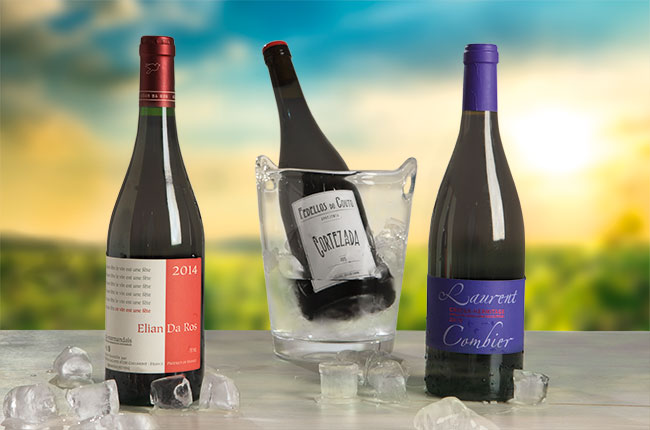White wine needs to be chilled, but are you serving it too cold? See our guide below.
White wine serving temperature guide
The style of your white wine impacts what temperature it should be served at.
You need to consider factors like the weight and body of the wine, and whether it has been oaked.
‘I tend to think of temperature as having an effect similar to the ‘sharpen’ feature in photo editing apps,’ said James Fryer, beverage director for London restaurants Clipstone and Portland.
‘Colder temperatures can accentuate lines and edges whereas, the warmer a wine becomes, the more those edges can seem to blur and overlap.’
‘Acidity and fruit tend to be the two end-points of this equation, with fruit character becoming more obvious with increasing temperature – whilst acidity tends to stick out a bit more, as those fruitier tones recede at lower temperatures.’
What temperatures should they be?
At a glance
- Lighter white wines are served the chilled, between 7-10 ̊ C (44- 50 ̊ F).
- White wines with more body, or oak, should be served at a warmer temperature of 10-13 ̊ C (50 – 55 ̊ F) – just lightly chilled.
- Sparkling wines are best served well chilled, at 6 – 10 ̊ C (42 – 50 ̊F)

The best temperatures for white wines. Credit: Annabelle Sing/Decanter
‘Young, crisp and aromatic wines show well at the lower end of the spectrum; cool temperatures emphasise their refreshing qualities and acidity,’ said DWWA judge Matt Walls.
‘Mature, complex whites are best served cool rather than cold, their aromas being more open at the warmer end of the scale.’
‘I’ll tend to leave Chardonnay and things of its ilk – Viognier, Roussane, Marsanne – out in the cellar rather than putting them in the fridge,’ said Fryer.
‘I do love sparkling wines a bit colder, though not ice cold and, during hotter months – or perhaps that should be single month in the case of the UK. I like to switch over to Riesling where a bit more chill can accentuate the grape’s natural acidity.’
‘My domestic fridge is set to 4 ̊ C and I usually put my whites in for an hour and a half for a light chill, two and a half hours for a full chill,’ said Walls.

Sparkling wines should be served well chilled. Credit: Cath Lowe/Decanter
Can your white wine get too cold?
Yes – if it’s served too cold, it can potentially mask some of the flavours.
‘As a rule, people tend to over-chill their whites, but at least a wine that’s too cold will gradually warm up in the glass,’ said Walls.
‘If wines get too cold, at a certain point a wine will become so angular and sharp-edged that it becomes unpleasant. It’s like you’re left with only the bones of a wine without any of the flesh – the fruits, florals, spice – that makes it individual and enjoyable,’ said Fryer.
Chilling wine in a hurry?
‘If I’m in a hurry, I’ll put them in the freezer for 22 minutes for a light chill, 28 minutes for a full chill – just make sure you don’t forget about them!’ said Walls.
‘An ice bath is always good (with bottle completely submerged),’ said Fryer.
‘But, if all else fails, I’m not adverse to popping an ice-cube or two into the glass either – it’s your wine, you bought it, you should be able to do what you want with it right?’
More wine advice:

Should you put ice cubes in wine?
What to do if your wine isn’t chilled enough...

Best summer red wines to drink chilled
What styles to go for, plus our recommendations...

Which red wines are best for chilling? – ask Decanter
These are the styles to go for...

Is pale rosé wine better quality? – ask Decanter
Always pick the lightest...?

How to chill wine quickly – ask Decanter
What's the quickest way to cool a bottle of wine?

BBQ wines: 18 picks to accompany your barbecue dishes
With summer now in full swing, check out our guide to the perfect BBQ wines...

Picnic wine recommendations for the summer
Plan the perfect picnic with our choice of wines to take with you...







